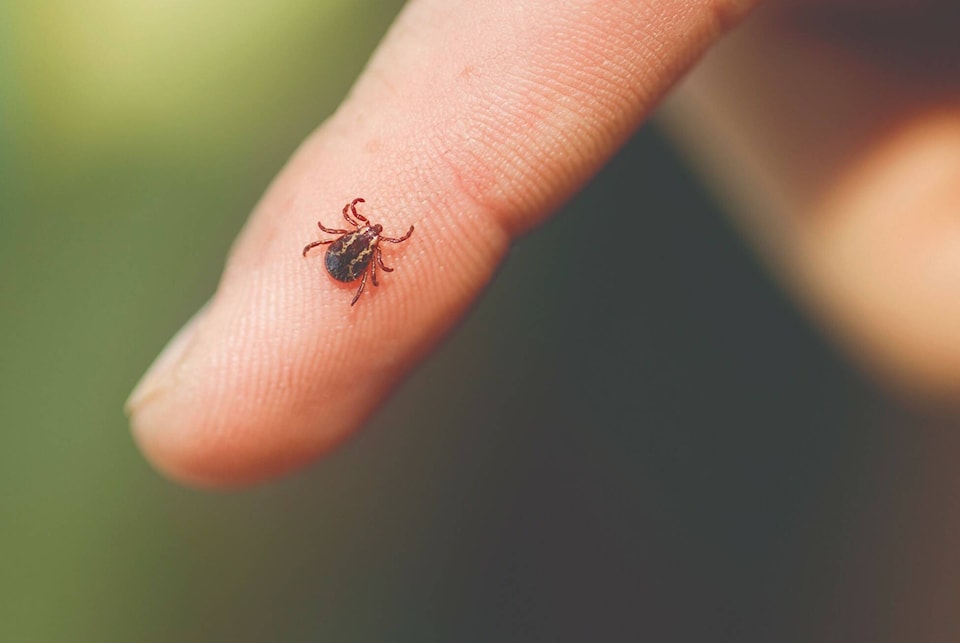People and critters are already up to their usual âantâ -âticksâ this spring.
Ticks, tiny eight-legged blood-suckers have been spotted hitching a ride for a walk in the woods on people and pets as the sun warms up the Okanagan.
There are more than 20 species of ticks in B.C., but only three species typically bite humans. Most sip blood from small animals.
Ticks cannot jump or fly and do not drop from trees, they crawl up plants, usually blades of grass and wait, with their arms outstretched, until a host brushes against them. After hopping on, ticks climb upwards until they find a suitable spot to latch onto.
While they may be creepy, the itsy-bitsy arachnids are not usually a threat to humans or pets.
One species of tick, The Western Black-legged Tick, is a carrier for the microorganism responsible for Lyme disease. Bites from the black-legged tick can cause a slow-healing ulcer, even if not infected with Lyme disease.
There is little danger of contracting an ailment like Lyme disease if the tick is removed quickly.
If a tick latches onto you, or your furry friend, gently pull them out with your fingernails or tweezers. Ticks do not burrow under the skin, they attach themselves with small, barbed mouthparts.
The wound should be cleaned and treated with an antiseptic. See the for further detailed information on removal of ticks.
recommends the use of tick-prevention medication to prevent disease transfer to pets.
The government of B.C. has a list of precautions to avoid tick attachment.
- Wear high boots or tuck pant cuffs into socks. Tuck shirt into pants. Do not wear short pants. Application of commercial insect repellents containing diethyl toluamide (DEET) to the pants may assist in repelling ticks.
- If possible, avoid game trails or old roads overgrown or closely lined with vegetation. Tick levels may be high in areas frequented by animals.
- When resting, sit on a bare rock, a ground sheet, or a vegetation-free area instead of stretching out on vegetation.
- Check for ticks daily, paying particular attention to the pubic region, the base of the skull, and the scalp. Clothes should be closely examined for ticks, especially near the collar, after they have been hanging overnight.
If you experience a fever, headache, muscle and joint pains, fatigue, weakness, paralysis, a skin rash, especially one that looks like a âBullâs Eyeâ within days or weeks after being bitten by a tick, report them to a doctor immediately.
READ MORE: Structure fire evacuates plant in ÁðÁ§ÉņÉį
Jacqueline.Gelineau@kelownacapnews.com
Like us on and follow us on and subscribe to our daily and subscribe to our daily newsletter.




